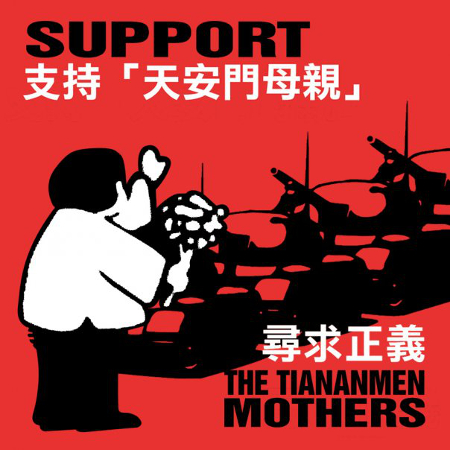Book Review: Owens’ Writing Childbirth
Owens, Kim Hensley. Writing Childbirth: Women’s Rhetorical Agency in Labor and Online. Carbondale: Southern Illinois UP, 2015. Print.
In Writing Childbirth: Women’s Rhetorical Agency in Labor and Online, Kim Hensley Owens studies women’s birth narratives and birth plans in order to identify and analyze the ways in which women assert and navigate agency before, during, and after childbirth. Articulated at the intersection of everyday rhetorics and rhetorics of health and medicine, Owens investigates the ways women “negotiate, accept, and/or resist various subject positions in and through their birth writing” and how writing plays a part in constructing women’s childbirth experiences (14, her emphasis). In doing so, Owens brings scholarly attention to everyday women’s writing and contributes to rhetorical studies a more nuanced understanding of feminist rhetorical agency.
Owens defines feminist rhetorical agency as “a series of assertions over time and space rather than exclusively as specific instantiations in or for a particular moment or event” (2). This definition departs from traditional conceptions of agency as located in a particular moment or as an individual’s enactment of power. By bringing attention to the contexts, spaces, and places that allow agency to emerge, Owens accounts for the multiple factors that affect and effect women’s rhetorical agency, including the dominant cultural narratives and contexts that influence women’s decisions and the experiential and educational knowledges they gather to negotiate these contexts. For instance, regarding childbirth specifically, she finds that “rhetorical agency is granted the body whose request conforms to Western medicine expectations,” since these expectations reflect the dominant cultural narrative of childbirth, and women who wish to determine their own birthing experiences that deviate from the hegemonic expectations must find alternate ways to enact agency (86). Birth plans, therefore, can serve as a woman’s surrogate, communicating for her in contexts when the hegemonic medical narrative is at odds with her wishes.
Owens’ concept of feminist rhetorical agency emerges through a close analysis of women’s writing. She impressively tackles a range of texts, including 120 birth narratives published on five parenting websites, responses from 34 women who authored the online birth narratives, five birth plans, and birth plan templates found online. This comprehensive database of information allows her to provide both breadth and depth of analysis on the functions of birth plans and how they sponsor agency. Though she defines feminist rhetorical agency in the introduction, Owens spends the rest of the book explaining and nuancing the concept by bringing these different texts into conversation, producing a thorough and rich examination. She structures the book “to mimic a modern American woman’s experience of childbirth,” therefore, chapters move from contextualizing dominant narratives of childbirth and the birth plan genre, to analyzing the effects of birth plans and women’s reflections on childbirth experiences (16).
Because context influences women’s agency, in Chapter 1, “Understanding Birth: Commonplaces of Modern American Childbirth Advice,” Owens synthesizes existing rhetoric scholarship, medical documents, and popular texts on childbirth to trace how we arrived at the current context of childbirth, paying particular attention to how dominant narratives shape current expectations of labor and delivery. This history identifies an early 20th century rhetoric of medical progress as an important influence in the medicalization of pregnancy and childbirth, experiences that women and midwives had traditionally attended to. Moving these experiences from the home and into medical spaces consequently fashioned a new hegemonic medical narrative of pregnancy and childbirth, one that places normal and safe childbirth under the control of hospitals, physicians, and nurses. As a result, the dominant, medicalized discourses of childbirth continue to “shape contemporary women’s choices, including their plans for, experiences of, and writing about childbirth” (19). As Owens explains, women who deviate from the dominant narrative “pose rhetorical and material challenges to childbirth’s medical progress narrative” and, in acts of feminist rhetorical agency, write birth plans “in an effort to . . . intervene in industrial and legally and technologically bound hospital practices” (38). Bringing attention to the histories of dominant cultural scripts that have established contemporary conventions of childbirth allows Owens to reveal the ways women must negotiate their contexts so they, too, can have a voice in their childbirth experiences.
Drawing from the previous chapter’s discussion on the function of birth plans, in Chapter 2, “Inventing Birth: Rhetorics of Control and Resistance,” Owens analyzes survey responses, birth plans, and birth plan templates to theorize how the birth plan genre invents and limits what’s possible regarding women’s agency. As she explains, women mobilize both educational and experiential knowledges to craft birth plans to ensure they “have the type of birth they expect” (52). Specifically, women who have not experienced labor tend to rely heavily on others’ experiences and internet research; developing birth plans based on existing birth plans, and birth plan templates, constructs possibilities for their own birth plans. On the other hand, women who have experienced labor and delivery often leverage their own experiential knowledge in their plans. While birth plans function as a way for women to enact agency, Owens finds that the format and content conventions of the genre invite women, when writing their own plans, to piece together components of several birth plans, which consequently “speak as a chorus comprising template authors and everyone else consulted in the writing” and bring into relief the complexities of equating writing birth plans with developing a woman’s individual agency (63). Agency is not merely an individual’s assertion of power but an emergence that includes others’ voices, experiences, and perspectives.
Owens continues to nuance her concept of feminist rhetorical agency by highlighting the ways women anticipate and perhaps participate in their own rhetorical disability. In Chapter 3, “Confronting Birth: Rhetorical Disability and Five Women’s Birth Plans,” Owens analyzes five women’s birth plans and claims that these texts function by compensating for women’s “loss of rhetorical power” in the hospital setting (85). As Owens describes, women are positioned as rhetorically disabled because of their perceived “inability to communicate effectively due to pain, medication, an impaired mental state, and/or an imbalance of power between themselves and their attendants or between their own bodily authority and technology’s authority” (68). Therefore, a birth plan can advocate for a woman and “stand in for her voice” when she is otherwise silenced. This perspective into how birth plans function invites readers to re-think and re-see what agency “looks” like: enacting agency is not simply the act of declaring wishes in a hospital setting, but also includes the ways a woman anticipates her wishes being questioned or dismissed, and how she takes measures, such as writing a birth plan, to ensure her wishes are still communicated, understood, and honored.
Building on this discussion of distributed agency, Chapter 4, “Hosting Birth: Birth and Birth Stories over Time and Online,” draws from birth narratives published on parenting websites in order to consider the role of the Internet in limiting and spreading feminist rhetorical agency. In this chapter, Owens describes how women seek educational knowledge on pregnancy and childbirth through parenting sites. Her discussion brings into question the ways website design hierarchy participates in constructing for women what they understand to be possible and, in turn, childbirth experiences. Reading other women’s birth plans, therefore, offers women nonhegemonic insight into childbirth, and Owens claims these encounters function as one of many ways a woman develops agency in childbirth. Furthermore, Owen’s consideration of the ways women interact with these online birth narratives continues to support her notion of agency as distributed across multiple spaces and times, not only as located in a particular moment: online research enables women to envision, develop, and implement plans in a future time and place.
In discussing the functions of birth plans in the first four chapters, Owens brings attention to the generative and epistemological effects of the act of writing birth plans. She extends this discussion on the function of writing in Chapter 5, “Sharing Birth: Catharsis, Commentary, and Testimonials in Online Birth Stories,” by bringing together online birth narratives and survey responses to consider the ways writing in general and birth plans in particular facilitate catharsis, self-analysis, and reflection. Owens invited women who have published their birth plans online to reflect on their narrative-writing experiences. Studying the narratives and subsequent responses reveals how women understand themselves as agentic individuals: in their narratives, women write themselves into their roles and experiences, thereby constructing a “retroactive assertion of agency” (116). The act of writing, then, allows women to “protect their memories and encapsulate the details of their experiences in a manner their brains or voices alone would not” (132). When shared publicly, these narratives can disrupt hegemonic expectations of childbirth and make space for other childbirth experiences. These larger cultural and ideological effects of sharing birth narratives speak back to Owens’ concept of feminist rhetorical agency as having lasting effects beyond the individual herself: birth stories are not neutral, passive texts but participate in shaping others’ understandings and possibilities of childbirth experiences.
One of Owens’ most interesting insights is the imperative for rhetoricians to privilege both experiential knowledge and educational knowledge, not sacrificing one at the expense of the other. Throughout the book, Owens recognizes and values the agentic moves of first-time mothers who leverage educational knowledge in their birth plans and those who draw from their own experiential knowledge of childbirth. In doing so, she resists privileging either knowledge and reaffirms this point in the epilogue. Owens describes early criticism she received on her work because of her lack of experiential knowledge, since she had not, at that point, experienced childbirth. She recalls women’s skeptical responses to her work as they drew from their own embodied experiences with childbirth—a move to trump the educational knowledge she gathered through research. She reflects on these encounters to conclude that experience is “so amorphous a concept” that personal experience “must not be a prerequisite for scholarly work” (145). The differences in women’s experiences accounts for the value in both experiential and educational knowledge, but Owens warns against using one to evaluate the other. Doing so minimizes what counts as valid ways of knowing and being in the world. While she recognizes experience “as a legitimate, even requisite, basis for inquiry or authority,” it can also signify as “a construct, a rhetorical space that can serve to close off rather than open up discussion” (140). This conclusion is an important lesson for those working with public rhetorics and those committed to a feminist ethic of difference: both personal experience and scholarly research are always constructed, partial, and contingent. While the two can “connect and inform one another,” they can do so only in particular and incomplete ways (146).
Owens’ rich analysis and thorough articulation of feminist rhetorical agency reflect the variety of texts she examined. Her hybrid method of data collection, or combining traditional text-based artifacts with more qualitative approaches, responds to Scott, Segal, and Keränen’s challenge for rhetorics of health and medicine scholars to look “beyond the traditional rhetorical toolbox . . . to utilize the methods of social science in ways that leverage our uniquely rhetorical contributions” (3). Similarly, Lisa Keränen has suggested that traditional rhetorical hermeneutics could benefit from social science methods when working with public rhetorics in order “to capture the complex texture of public action and understanding” (104). While we have seen similar hybrid methods in rhetorics of health and medicine scholarship (see, for example, Angeli; Connellan, Riggs, and Due; Lawrence, Hausman, and Dannenberg; Segal; Spoel, Harris, and Henwood; Teston, Graham, Baldwinson, Li, and Jessamyn) and rhetorical studies of women’s reproductive bodies specifically (see, for example, Koerber; Vardeman-Winter), Owens’ book ought to serve as a model that draws on various methods, merges scholarly studies and public discourses, and balances depth and breadth of analysis.
Writing Childbirth comes at a kairotic moment as both rhetorical theory scholarship and public discourses have seen a surge in discussions surrounding women’s reproductive bodies. Along with recent books such as Lindal Buchanan’s Rhetorics of Motherhood, Bernice Hausman’s Viral Mothers: Breastfeeding in the Age of HIV/AIDS, Marika Seigel’s The Rhetoric of Pregnancy, Lydia McDermott’s Liminal Bodies, Reproductive Health, and Feminist Rhetoric: Searching the Negative Spaces in Histories of Rhetoric, and Amy Koerber’s Breast or Bottle?: Contemporary Controversies in Infant-Feeding Policy and Practice, Owens extends rhetorical study to examine the experiences of and discourses surrounding women’s reproduction and choices women make concerning their bodies. By studying women’s birth plans and narratives, she offers a more expansive notion of the kinds of texts rhetoric scholars should pay attention to, and she models a way to merge the scholarly and the public through rhetorical study. In the final pages of the book, she claims the most significant contribution of the book is bringing together “the rhetorics of the everyday with rhetorics of health and medicine” (160). Therefore, Writing Childbirth is an important text for not only what it studies, everyday women’s writing, but also for how it studies it, a hybrid method guided by rhetorical analysis that examines a variety of texts. With its thick descriptions and critical analyses, this book is required reading for those interested in rhetorics of health and medicine, feminist rhetorics, public rhetorics, and rhetorical agency.
Works Cited
- Angeli, Elizabeth L. “Three Types of Memory in Emergency Medical Services Communication.” Written Communication 32.1 (2015): 3-38. Print.
- Buchanan, Lindal. Rhetorics of Motherhood. Carbondale: Southern Illinois UP, 2013. Print.
- Connellan, Kathleen, Damien W. Riggs, and Clemence Due. “Light Lies: How Glass Speaks.” Communication Design Quarterly 3.4 (2015): 15-24. Print.
- Hausman, Bernice L. Viral Mothers: Breastfeeding in the Age of HIV/AIDS. Ann Arbor: U of Michigan P, 2010. Print.
- Keränen, Lisa. “Public Engagements with Health and Medicine.” Journal of Medical Humanities 35.2 (2014): 103-109. Print.
- Koerber, Amy. Breast or Bottle?: Contemporary Controversies in Infant-Feeding Policy and Practice. Columbia: U of S Carolina P, 2013. Print.
- Lawrence, Heidi Y., Bernice L. Hausman, and Clare J. Dannenberg. “Reframing Medicine’s Publics: The Local as a Public of Vaccine Refusal.” Journal of Medical Humanities 35.2 (2014): 111-129. Print.
- McDermott, Lydia. Liminal Bodies, Reproductive Health, and Feminist Rhetoric: Searching the Negative Spaces in Histories of Rhetoric. London: Lexington, 2016. Print.
- Scott, Blake, Judy Z. Segal, and Lisa Keränen. “The Rhetorics of Health and Medicine: Inventional Possibilities for Scholarship and Engaged Practice.” Poroi 9.1 (2013): Article 17. Web. 22 June 2016.
- Segal, Judy Z. “Cancer Experience and its Narration: An Accidental Study.” Literature and Medicine 30.2 (2012): 292-318. Print.
- Seigel, Marika. The Rhetoric of Pregnancy. Chicago: U of Chicago P, 2013. Print.
- Spoel, Phillipa, Roma Harris, and Flis Henwood. “Rhetorics of Health Citizenship: Exploring Vernacular Critiques of Government’s Role in Supporting Healthy Living.” Journal of Medical Humanities 35.2 (2014): 131-147. Print.
- Teston, Christa B., S. Scott Graham, Raquel Baldwinson, Andria Li, and Jessamyn Swift. “Public Voices in Pharmaceutical Deliberations: Negotiating ‘Clinical Benefit’ in the FDA’s Avastin Hearing.” Journal of Medical Humanities 35.2 (2014): 149-170. Print.
- Vardeman-Winter, Jennifer. “Medicalization and Teen Girls’ Bodies in the Gardasil Cervical Cancer Vaccine Campaign.” Feminist Media Studies 12.2 (2012): 281-304. Print.




 Kelly A. Whitney is a doctoral candidate in Rhetoric and Professional Communication at New Mexico State University. Her research and teaching interests center on epistemology in scientific and medical discourses, particularly as studied through feminist and disability rhetorics. Her current research is located at the intersection of technical communication and rhetorics of health and wellness and examines the emergence and function of women’s preventive health practices.
Kelly A. Whitney is a doctoral candidate in Rhetoric and Professional Communication at New Mexico State University. Her research and teaching interests center on epistemology in scientific and medical discourses, particularly as studied through feminist and disability rhetorics. Her current research is located at the intersection of technical communication and rhetorics of health and wellness and examines the emergence and function of women’s preventive health practices.